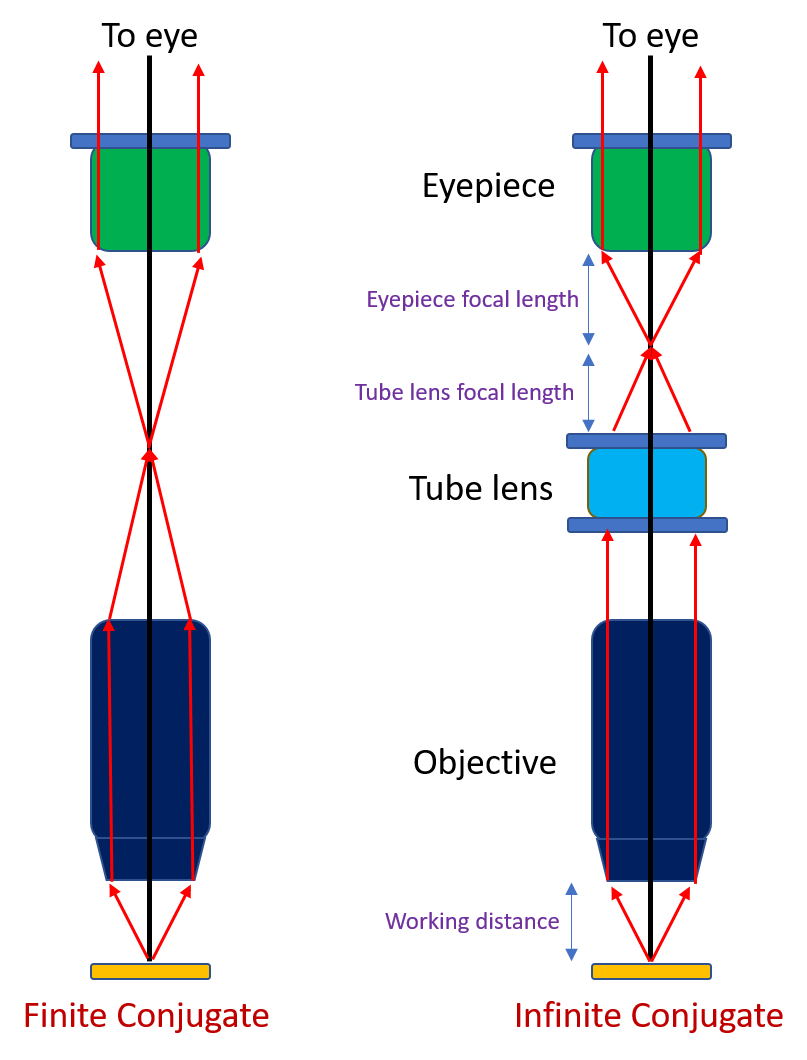Reading time: 1 min 2 sec
An objective is nothing but a compound lens, like a normal lens, the only difference is they are much more potent in terms of numerical aperture, resolution and magnification. In microscopes, objectives are mainly used with two optical designs: finite or infinite conjugate designs. In a finite optical design, the light from a spot is focused into another spot with the aid of a couple of optical elements. In an infinite conjugate design, the diverging light from a spot is made parallel.
In a microscope (see the figure below), finite conjugate objective focusses the light from the object (specimen kept at the working distance) into the focal plane of the eyepiece so that the eyepiece produces parallel rays. These parallel rays form an image on our retina because of our eye-lens! This design is implemented in almost all conventional microscopes as this is relatively cost-effective.
An infinite objective collects light from an object (kept at its working distance) and then forms a parallel beam which is finally focused on the focal plane of the eyepiece with an additional set of lenses called tube-lens. The advantage of using this optical design is that we can insert extra optical elements such as polarizers, wave-plates in-between the tube lens and objective without altering the beam properties. Also, the magnification of the objective can be varied* by adjusting the position of the tube lens.
*note that the magnification written on an objective is based on a fixed focal length of tube-lens. E.g., Nikon microscopes have a fixed tube lens focal length of 200 mm.


4 thoughts on “Finite and infinite conjugate objectives”